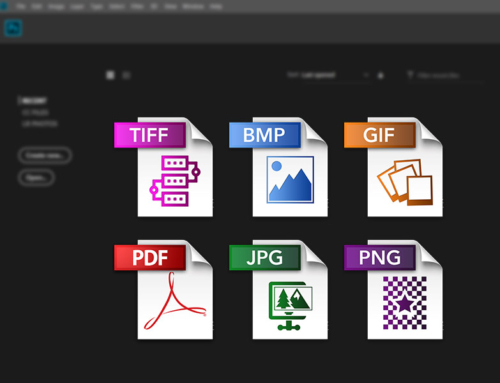[vc_row height=”small”][vc_column width=”1/4″][vc_raw_html]JTNDY2VudGVyJTNFJTNDc2NyaXB0JTIwdHlwZSUzRCUyMnRleHQlMkZqYXZhc2NyaXB0JTIyJTNFJTBBdmFyJTIwdXJpJTIwJTNEJTIwJTI3aHR0cHMlM0ElMkYlMkZpbXB1cy50cmFkZWRvdWJsZXIuY29tJTJGaW1wJTNGdHlwZSUyOGltZyUyOWclMjgyNDA2NzA0MCUyOWElMjgzMDI5NzY1JTI5JTI3JTIwJTJCJTIwbmV3JTIwU3RyaW5nJTIwJTI4TWF0aC5yYW5kb20lMjglMjklMjkuc3Vic3RyaW5nJTIwJTI4MiUyQyUyMDExJTI5JTNCJTBBZG9jdW1lbnQud3JpdGUlMjglMjclM0NhJTIwaHJlZiUzRCUyMmh0dHBzJTNBJTJGJTJGY2xrLnRyYWRlZG91Ymxlci5jb20lMkZjbGljayUzRnAlM0QyNjQzNTUlMjZhJTNEMzAyOTc2NSUyNmclM0QyNDA2NzA0MCUyMiUyMHRhcmdldCUzRCUyMl9CTEFOSyUyMiUzRSUzQ2ltZyUyMHNyYyUzRCUyMiUyNyUyQnVyaSUyQiUyNyUyMiUyMGJvcmRlciUzRDAlM0UlM0MlMkZhJTNFJTI3JTI5JTNCJTBBJTNDJTJGc2NyaXB0JTNFJTNDJTJGY2VudGVyJTNF[/vc_raw_html][/vc_column][vc_column width=”3/4″][vc_column_text]We’re constantly asked “how do I get better photography?” or “how can I get professional photos with my camera?” With the evolution of smartphone cameras and the internet as an educational platform that can allow aspiring photographers to learn new tricks for the craft of good photography there are literally dozens of web pages with various tips and strategies. In this article we provide 20 tips for better photography whether you are working with a Digital SLR camera or an smartphone. We will address tips and tricks as they relate to photography in either setting so that you can start taking better photos tomorrow.
- Consider The Context – There are millions and billions of photographs taking every day so it’s important to understand the context in which the photograph will be implemented. We ask you to consider how you plan to use your photography in order to determine how to approach many of tips and strategies we will outline. For example, if you are taking photographs of a product your approach may in fact differ greatly compared to someone taking landscape photography.
- Think About Lighting – It’s easy to take a photograph anywhere and that’s why we are getting a lot more photographers breaking the limits of controlled studio lighting brings about a series of new problems to consider. For example if you are planning to use daylight, try to shoot your photos during times where there will be light but just enough to capture your subject in a good light and without any distracting unintended shadows. It has been echoed that 8:00am and 5:00pm are golden hours to take outdoor photography. Always make sure your subject is cast with an adequate amount of lighting however if you do plan to take a silhouette and plan to use shadow as part of your photograph do it in a way that shows your audience that you purposefully did it in this way.
- Use The Flash or Lighting Appropriately – Taking photographs in harsh sunlight brings about a different type of photographic problems. However in many cases using some type of light you can actively fill in the details of those ugly shadows in your subject and create an even exposure. Obviously knowing when you should add extra light is the key to becoming a good photographer.
- Understand ISO – Deciding the shutter speed for your camera is essential to capturing specific photographs in the right way. A lower ISO is perfect for taking day time photographs or a quick moving object because what it does is allows less light in and therefor captures shorter instance. Using a higher ISO is great for shooting at night or getting blurred effect which happens when light is captured throughout the shutter speed. Understanding the pros and cons of each polar opposite allows you to take photographs in different environments with different circumstances and get a great photograph.
- The Famous F-Stop – My default f-stop is f/4 although there is a variety of options. Each one brings about different pros and cons. What I love the most about properly using this aperture effect is the ability to really focus in on a particular subject which gives your photographs depth and a focal point.
- Framing Your Shot – Find a clever way to frame your subject. This can be a number of ways and it is something every professional photographer does at some point. We don’t advocate framing every shot but if you can find a clever way or subtle way to frame your subject go for it.
- Watermarks – Just no. You can place a watermark to prevent your photo from being stolen but believe me if someone wants your photo getting rid of your watermark is often achievable. The reality is if you don’t want anyone to use your photograph at all don’t post it on the internet.
- Be Present – Get comfortable with your model or scenery and become submerged in your photograph. Interact and talk with your subject because this allow them to feel relax and not feel like some type of experiment. Some of my best shots have been caught when I took a picture while I was talking with the model. Think about the photo and how you can best convey the moment.
- Shutter Speed – You can adjust the shutter speed of your camera and take photos that capture sporting events and or blurry moving tail lights on a highway and these are effects that are done by manipulating the shutter speed.
- Choose The Right Lens – Understanding the benefits of using a short-range lens versus a landscape lens will make a huge difference depending on the situation. In any case, using the same lens for a photo shoot will provide consistency and an overall sense of professionalism.
- Shoot A Lot of Pictures – The reality is the best photograph will often be in one small instance or two and taking plenty of photographs to capture different expressions, lighting, and angles will allow you the opportunity to choose the very best picture at the end of the day which may only be one or two.
- Understand Composition – There are many tried and true proven techniques to capturing a good photograph like the rule of thirds, and the golden triangle. If you are not familiar with many of these photographic compositions gather some insight on them and learn to use them appropriately in your photography. This alone can make your photographs look very professional.
- Perspective – You can take your subject/model and place them right in the middle and take a picture dead on from the front, but you can also play with the perspective and get a variety of angles to make your photographs more interesting. You will capture different shadows, expressions, and get a solid group of photos to choose from for your final photo batch
- Consider The Setting – Taking photographs can capture a lot of elements and often include unintended elements. Take great care in considering your subject and the different elements in the environment. Figure out what is working to reinforce your message or photograph and manipulate the setting to cater to your focal point while styill providing interesting detail for you audience to view.
- Avoid Excessive Post-Editing – The goal is to take a great shot from the beginning so that you don’t have to do much post editing. Too much post-editing can often ruin or take away from the natural beauty of the raw photograph. Focus on getting a golden quality photography from the start and edit conservatively as needed.
- Give Back To Your Models – Find ways to give back to those that have modeled for you. Often times many subjects don’t have many photos of themselves and rendering a quality photograph as a gift can make a world of a difference.
- Become Part of the Photographing Community – Become involved with the communities around photography. Share your work with others and find out what photography is working and what isn’t with constructive criticism from your peers. Often times sharing our work allows us to hear feedback from people with a different perspective.
- Keep It Simple Stupid (KISS) – As in design, keep your photography simple in many cases. This will allow your photography to resonate, have a focal point, and translate well to broader audience.
- Lastly, Break The Rules – That’s right don’t listen to any of these tips all the time. In some cases you have to go with your gut and get that shot you feel is going to capture your subject or moment in the best fashion. Don’t be scared to break the rules of proven techniques and methods to deliver a unique photography experience.
That’s all I could muster guys, it’s been a long day. I just wanted to share a few tips with you guys on how to get awesome photography. Nowadays you don’t even need a great camera to be great photographer. Just use good composition and some of the techniques outlined here and you are sure to get some great photographs.[/vc_column_text][/vc_column][/vc_row]






